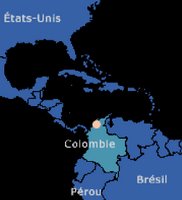Barranquilla, the access to the city regarding to the question of heritage conservation in the city center.
[ Aurélia SAVERY saveryaure@gmail.com , Yâsimîn VAUTOR yasimin@ifrance.com janvier 2003 ]
At the beginning of the century, Colombia was mainly a rural country. But between 50´s and 70´s, the situation reversed. 75% of the rural population left their villages for the cities like Barranquilla. Because of the massive migration flux, the city center District Central becomes collapsed and not even more attractive. A major part of the high class population started leaving the centre, and it led to the decline of city center (pauperization, fail of commerce and industries, increase of violence and insecurity). The current policies to redevelop the city centre include a valorization of the heritage and hence a changing class population. Policies benefit the high class population in order to gentrify the centre. What happen for the low and middle class living currently in the centre, as they can’t afford the repairing of the old buildings? For the name of the heritage conservation, is it worth to through out an important part of the population? As the city is defined by a cultural melting pot, a mix of different ways of life, the popular aspect is inherent of the identity of the city, and so this part of people has a main part in the identity.
We propose a draft of our reflections on how to link the urban, social and economic aspects with the question of the heritage and redevelopment of the city centre.

At the beginning of the century, Colombia was mainly a rural country. But between 50´s and 70´s, the situation reversed. 75% of the rural population left their villages for the cities like Barranquilla. Because of the massive migration flux, the city center District Central becomes collapsed and not even more attractive. A major part of the high class population started leaving the centre, and it led to the decline of city center (pauperization, fail of commerce and industries, increase of violence and insecurity). The current policies to redevelop the city centre include a valorization of the heritage and hence a changing class population. Policies benefit the high class population in order to gentrify the centre. What happen for the low and middle class living currently in the centre, as they can’t afford the repairing of the old buildings? For the name of the heritage conservation, is it worth to through out an important part of the population? As the city is defined by a cultural melting pot, a mix of different ways of life, the popular aspect is inherent of the identity of the city, and so this part of people has a main part in the identity.
We propose a draft of our reflections on how to link the urban, social and economic aspects with the question of the heritage and redevelopment of the city centre.
0 Comments:
Post a Comment
<< Home